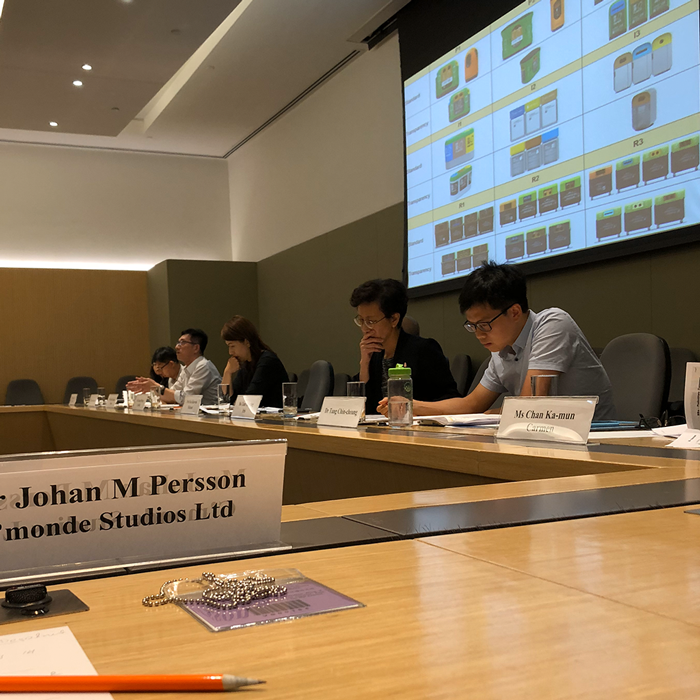Empower your team,
unlock innovation
Create Meaningful Customer Experiences with Design Sprints
A Design Sprints give teams a methodology to quickly find solutions to complex problems in a structured way, and to improve the user experience. The methodology is focused on solving a specific problem with a multidisciplinary team with different expertise and background. The workshops can be executed both IRL or online. There are some excellent online tools out there.
We provide moderators. A person with experience leading workshop with a group of 5 – 25 people. The moderators roll is to structure the meeting and keep things moving with eye on the target, although sometimes they pause when the team need to go into depth in questions.
Agenda
- Frame – Set clear objectives
- Discover – Interview, Research & Mapp
- Define – Analyse and Prioritise
- Develop – Ideate, Select and Prototype
- Deliver – Test and Iterate
- Launch – Measure, Followup

Our Collaboarative Workshops

Understand and Define
We start with understanding the problem, defining the challenge, and aligning the team around a common goal. This involves presenting or reviewing existing data, research or any existing user feedback to identify the key problem areas and defining a specific challenge to address. If data is not available yet the should agree on what test

Diverge. Create Ideas!
After having a clear idea of the problem the team will start to generate a wide range of ideas and solutions to the problem. This can involve brainstorming sessions, sketching, and other ideation exercises to encourage creative thinking and exploration.

Converge and Prioritise
In the next step we focus on selecting the best ideas from the ideation exercises. After prioritising the ideas we continue to make a plan for how the prototypes that will be created in the next step.

Prototyping
After selecting the best ideas we sometimes further test them by building simple early stage prototypes, using whatever tools are most appropriate for the task.
Regardless of large body of data, or whether your ideation sessions have resulted in, testing ideas early is still crucial. By prototyping and testing early prototypes, you can quickly reveal assumptions and uncover further insights to improve your solutions..

Testing Your Ideas
In design thinking, testing is a crucial process that involves gathering user feedback on the prototypes developed and gaining a better understanding of their behavior.
When testing a prototype, the focus should be on letting users experience it firsthand instead of over-explaining. Encourage participants to share their thoughts and think out loud as they interact with the prototype, while you observe their behavior neutrally. Follow-up with clarifying questions to gain a deeper understanding of their feedback.

Measure and Followup
1. Identify the goals you want to achieve.
2. Determine the metrics you will use to measure progress.
3. Collect data using methods such as surveys, interviews, and analytics tools.
4. Analyze the data you have collected to gain insights into what is working and what is not.
5. Monitor progress toward your goals over time, and adjust your approach as necessary.
6. Communicate the results of your measurement and follow-up efforts to stakeholders, such as team members, clients, or investors.
A selection of our favourite workshop tools

How Might We
The How Might We (HMW) tool is a key component of the design thinking methodology. It is a simple, yet powerful, question-stemming technique that helps to re-frame problems as opportunities for innovation. The HMW tool involves taking a problem statement or challenge and transforming it into a question that begins with the phrase “How might we…”.
This method help to re-framing big problems in to bit size questions. It promotes collaboration and communication: which can help to build trust, improve teamwork, and enhance overall group dynamics.

Dot Voting
Dot voting is a simple and effective tool used in design thinking to facilitate group decision-making. It involves giving each member of a group a certain number of dots or stickers to place on ideas or concepts that they believe to be the most promising or worthy of further exploration. The benefits of dot voting include:
Encourages participation: Dot voting allows everyone to have a say in the decision-making process, regardless of their position or role within the group.
Promotes collaboration: Dot voting is a collaborative process that brings people together to work towards a common goal.

Concept Poster
Finally, you get to present the idea!
The concept poster woks great in larger teams where groups work together. The poster should tell the story of the groups idea, why it matters, and how it works, because ultimately you want to influence your team to embrace the concept by communicating what makes it an appropriate solution.
Since this is a poster, you’ll want to keep it highly visual, using images and words that clearly articulate the important aspects of the concept.
Related CX Cases
Top



